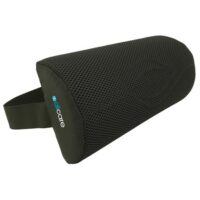What is Good Posture?
A Physiotherapist’s Guide

Maintaining good posture is essential for overall health and well-being. Poor posture can lead to muscle fatigue, joint stress, and discomfort. This FAQ page aims to answer common questions about good posture and provide tips for improving your posture.
Why is Good Posture Important?
Good posture is crucial because it helps your joints, muscles, and bones function optimally. Proper alignment reduces strain on your body, prevents pain, and boosts confidence. By understanding the importance of good posture, you can make conscious efforts to maintain it and enjoy its benefits.
Related Articles:
- Posture Correction Tips
- This article offers practical tips on how to correct your posture.
- Benefits of Good Posture
- Learn how maintaining good posture can positively impact your health.
- Posture and Confidence
- Discover the connection between posture and self-esteem.
How Can I Improve My Posture?
Improving your posture involves becoming aware of your body alignment and making small adjustments throughout the day. Practicing good standing, sitting, and dynamic postures can help. Regular posture exercises and consulting a physiotherapist for personalised advice can make a significant difference.
Related Articles:
- Standing Posture Tips
- Simple adjustments to improve your standing posture.
- Sitting Posture Tips
- Tips for maintaining a healthy posture while sitting.
- Posture Exercises
- Exercises designed to enhance your posture and prevent discomfort.
What Should I Do If I Experience Discomfort?
If maintaining a regular upright posture causes discomfort or pain, it’s important to seek professional help. A physiotherapist can assess your posture, identify any underlying issues, and provide tailored exercises and treatments to improve your posture and alleviate discomfort.
Related Articles:
- Posture Braces and Supports
- Information on when and how to use posture braces and supports.
- Customised Exercise Plans
- How personalised exercise plans can help improve your posture.

























